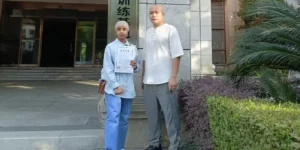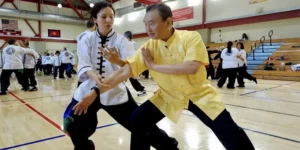Tai Chi push hands (Tui Shou) is far more than just a partner exercise; it’s the bridge between the solo forms of Tai Chi and martial arts. It cultivates your sensitivity, balance, and an understanding of Yin and Yang principles in motion.
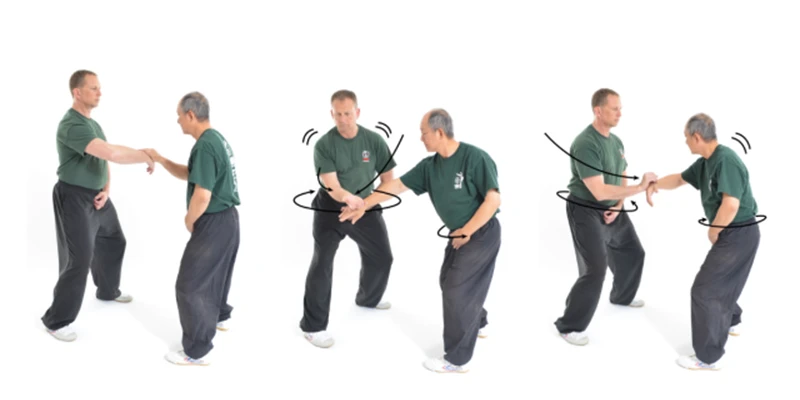
If you’ve ever wondered, “What is push hands in tai chi?” or searched for “tai chi push hands exercises” or “tai chi push hands techniques,” this guide is for you. We’ll cover how to do tai chi push hands, from basic drills to deeper training methods.
What is Push Hands in Tai Chi?
At its core, Tai chi push hands trains you to listen to and predict the opponent’s energy or intention, neutralize his force, maintain your own balance and structure, and finally issue force appropriately and efficiently. The core Tai Chi principles are yielding, sticking, adhering, and following. While it has clear martial arts applications, many practitioners value it equally for its health benefits. Discussions on platforms like the Tai Chi Push Hands Reddit often highlight these diverse benefits.
Tai Chi Push Hands Exercises and Techniques
Push hands is the partner-based practice central to Tai Chi Chuan. It emphasizes sensitivity, balance, and the principles of yin-yang. Below is a structured guide to key exercises and techniques:
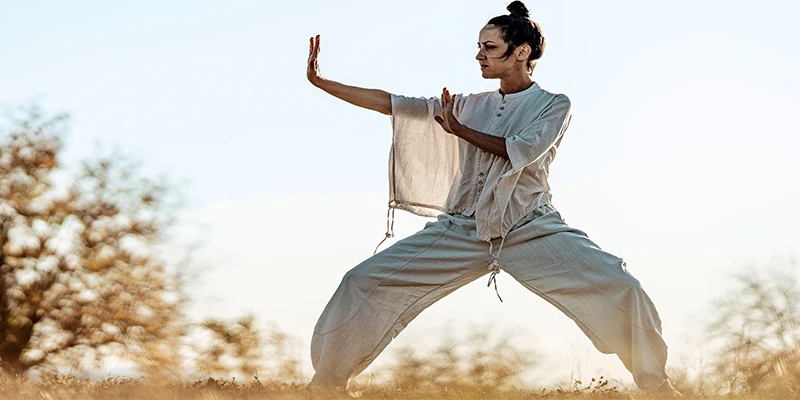
Tuishou Exercises
- Single-Hand Fixed Step: Improve your basic sensitivity and energy.
Move: Partners face each other in a stance. Right wrists touch; one partner pushes gently forward, the other yields. After each cycle, the roles are swapped - Double-Hand Fixed Step: Two-handed interaction and basic energy circles.
Move: Four energies cycle: Peng (ward-off), Lü (roll-back), Ji (press), An (push). Partners move in a circular pattern Forward → Down → Back → Up. - Moving Step: Practice footwork while maintaining sensitivity.
Move: Partners step forward/backward in sync. Smooth weight transitions, avoiding “double-weightedness.”
Key Techniques
- Ting Jin (Listening): Sense your partner’s intention, direction, balance, and source through light touch.
- Zhan Nian Jin (Sticking/Adhering): Maintaining constant, non-resisting contact to follow, control, and sense partner’s movements.
- Finding Empty & Solid: Discerning weak and strong points in the partner’s structure to apply technique effectively.
- Central Equilibrium (Zhong Ding): Maintaining dynamic balance and center control throughout interaction.
- Rooting (Ding): Maintaining stable connection to the ground for power generation and stability.
- Relaxation (Song): Essential for sensitivity, speed, and efficient power transfer; absence of unnecessary tension.
Keys of Tai Chi Push Hands Training
Tension kills your sensitivity and slows reaction time. Relax shoulders, elbows, wrists, and the mind. Practice tai chi push hands exercises slowly to refine alignment, sensitivity, and energy flow.
Especially early in training, make it a priority to understand your partner’s energy rather than trying to push them away.
What is push hands in tai chi? It’s a cooperative learning tool first. Avoid overextending past your toes or leaning, which exposes your balance. Coordinate your breathing and movements to maintain calm and strength.
More Resources and Community
Looking for visual learning? Explore high-quality tai chi push hands video content on tai chi push hands YouTube channels from reputable schools and masters. Engage with the global community; discussions on platforms like Reddit martial arts forums often delve into tai chi chuan push hands experiences, challenges, and interpretations. Search for “tai chi push hands reddit” to find these discussions.
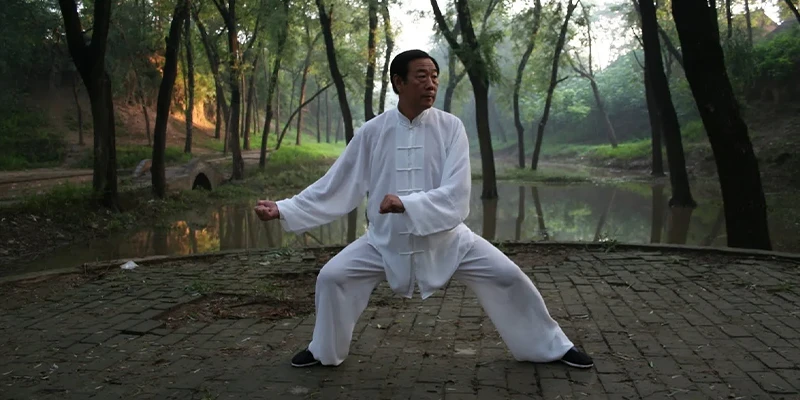
Tai Chi Push Hands Rules and Competition
Tai Chi Push Hands (Tui Shou) is both a training method in Tai Chi Chuan and a competitive sport.
Practice Rules:
- No Muscling: Avoid relying on brute strength. Use sensitivity, technique, and body mechanics.
- Maintain Contact: Aim to keep the contact points (usually forearms/hands) connected.
- Controlled Force: Apply force smoothly and appropriately, focused on unbalancing, not injuring.
- Respect Partner: Practice cooperatively to learn, not competitively to “win” during drills.
- Focus on Sensitivity: Prioritize “listening” and responding over attacking.
Competition formalizes the training principles into a rule set for scoring and safety. Rules vary significantly between organizations, but core elements are generally consistent.
Push Hands as a Sport:
Tai Chi Push Hands competition is a highly competitive form of Tai Chi combat. Tai Chi participants use pushing, holding, squeezing, pressing, and other movements to compete with their opponents in actual combat. The ultimate competition is to see who can control the opponent first or defeat the opponent.
Tai chi push hands competition is a competition in which both participants use “grabbing”, “pushing”, “holding” and “squeezing” in actual combat, emphasizing the coordination of “defending”, “retreating” and “advancing”, to test the participants’ understanding and application of Tai Chi, as well as their physical coordination and reaction ability. This form of competition is both competitive and can reflect the connotation of Tai Chi, such as “flexibility overcomes rigidity”, “static movement”, “hardness and softness combine”, etc.
Practicing Tai Chi Push Hands can enhance the coordination, flexibility, balance and strength of the body and improve physical fitness. Through the practice of pushing hands, you can exercise your will and cultivate a calm and composed mentality.

